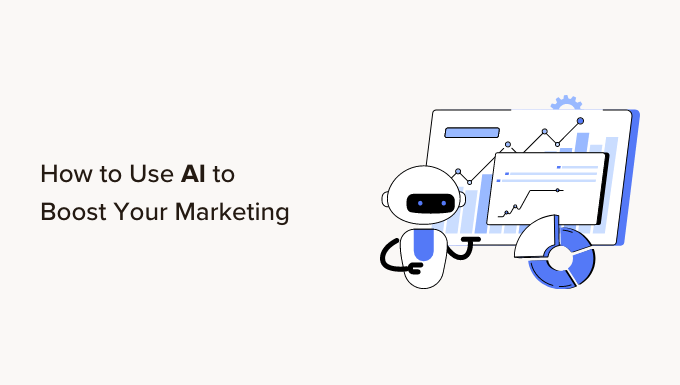
What You Need to Run an eCommerce Website Successfully
You must consider many factors before running an eCommerce website – the number one being that you need a viable product or service to sell, of course! But what else do you need?
If you’re thinking about starting an eCommerce website of your own, consider these considerations so your business can run as smoothly and successfully as possible.
A good domain name
A domain name is the most important thing you need to run a successful eCommerce site. You can get one in many ways, and it’s not that difficult.
The most common and easiest way is by purchasing a domain from a registrar, such as GoDaddy or Namecheap. You can also purchase your domain from a web hosting company, but this will usually cost more than just buying it from the registrar because of the added service.
Some companies offer deals where they’ll give you both domains and hosting in one package, which is great if you don’t have time to look around for both separately. If you want a custom domain (one without any other websites), try using a third-party registrar like Flippa, SnapNames, or Crazy Domains.
You should also research and find out how much your desired domain is going to cost before buying it; different places charge different rates depending on the year and condition of the domain.
You should know beforehand what you’re willing to spend so there aren’t any surprises when looking up prices, and make sure that you check out all available options!
To get the most out of your online identity, your business name and domain name should align. This is not a must, but a good business name will definitely positively influence your overall brand positioning.
A reliable web hosting service
Choosing the right web hosting provider is another important decision you will make for your business. The quality and performance of your site depend on it!
Without the right hosting, customers will have a slow site. And if you care about your site’s visibility on search results, you should know that speed is a crucial ranking factor. Your website won’t be indexed and discovered by search bots if they don’t load quickly.
Another role of web hosting is that it says a lot about your reputation. If customers can’t access your website, your products and services won’t be available. And you lose a lot in terms of revenue. This downtime could significantly bring your business down.
There are plenty of web hosting service options available today. But for those starting in eCommerce, the shared plan is the most practical choice.
With a shared plan, your site will only use a portion of the allotted dedicated server resources, meaning you can still grow without having to pay more for additional power. Plus, there are never any set-up fees or hidden charges, so you know exactly what you’re paying for and when.
An SSL certificate
SSL Certificates are the gold standard when it comes to safety and security between websites and users. This technology helps create an encrypted connection between the user’s browser and the website’s server.
With an SSL certificate, users can be confident that their personal information, such as credit card details, remains private and protected when making a purchase.
Users can easily tell if the website is secure by looking at the browser address bar. A lock icon in the address bar suggests that the website has an SSL certificate. And clicking on that icon provides more information about the SSL certificate of the website.
Now, do you really need an SSL certificate?
If you are processing payments yourself and will need to collect bank or credit card details, your eCommerce website requires this certificate. This way, you remain compliant with the requirements of PCI DSS.
However, if you are using a third-party website to process payments, you will still need an SSL certificate. In some cases, though, third-party eCommerce platforms will already take care of security for you, so you don’t have to. Even Google loves the green padlock on the website. It means that SSL will help in the SEO of your website for better rankings. In short, installing SSL on your website offers security, builds trust, improves user experience, and potentially boosts your SEO efforts.
A user-friendly platform
Shopify is one of the easiest eCommerce platforms to set up an online store without any technical expertise. It takes care of everything from hosting, security to payment processing so that you can focus on your product and business development. It’s easy to set up and use, has lots of features, and, best of all – it’s free for the basic package! It also has packages that allow you to create a professional-looking website with unlimited products, unlimited pages and blogs, customer accounts, and tracking shipments.
Shopify also has tons of templates that are ready-made for your store, so you can customize them as you, please. They also have beautiful, modern themes, so you don’t have to worry about spending time and money on designing something from scratch. If you are not sure what Shopify template to choose, you can always use a Shopify template detector such as ShopThemeDetector.com that will detect what template any Shopify site is using, then just use the same template they use.
Plus, they have an excellent app library that includes payment gateways like PayPal, Apple Pay, Google Wallet, or Stripe (PayPal is free), along with social media tools like Facebook or Twitter integration. That way, you don’t have to waste time setting up social media profiles, making updates, etc. All these aspects make Shopify one of the most user-friendly platforms out there.
Shopify is just one user-friendly platform out there. You can do a quick search online for other options that meet your needs.
A payment gateway
Choosing the right payment gateway for your online store can be complex, whether you’re running an eCommerce business or a software development company. There are many factors that you need to take into consideration, but the most important considerations are how many transactions you anticipate making on a monthly basis and what type of credit cards you’ll be accepting.
The first step is to determine which type of credit card you would like to accept: American Express, Visa, MasterCard, or Discover.
For example, if your company will only accept Visa and Mastercard, then Stripe or Adyen would be good options. If you’re not sure what types of cards your customers will have on them and want a universal solution, then PayPal or Apple Pay might be better options for your business. Yet another great payment option for your eCommerce website is integrating it with a digital wallet platform that ensures easy and secure transactions for your customers’ needs.
Proper address verification
Address verification software for eCommerce businesses is vital for order accuracy and customer satisfaction. Implementing real-time validation against reliable databases prevents errors and reduces shipping costs. A streamlined address verification process enhances efficiency and builds trust, fostering a successful online brand presence.
Shipping options
Shipping can be a difficult part of running an eCommerce website. However, if you want your business to be successful, you need to find a way for customers to get their purchases delivered as quickly and cheaply as possible. Fortunately, there are many tools available that will help you stay competitive in this area.
The most popular shipping options for eCommerce stores are FedEx and UPS. These services have the cheapest rates on international shipments and offer many different delivery options. In order for these services to work well with your site, you’ll need plugins or extensions like ShipStation or Endicia, which can help automate the process.
USPS also offers inexpensive rates and great tracking service but doesn’t provide quick shipping times or affordable international options.
Tax compliance
As a small business owner, you’ll need to be prepared for tax compliance, and eCommerce websites are no different. The IRS considers any website that sells products or services as a retail store that has the same responsibilities as any other retail store. This means if you’re not collecting sales tax on your products, you’re taking a big risk. To streamline this process and ensure accuracy in compliance, considering the integration of an AI Compliance Officer can be a game-changer. This advanced solution utilizes artificial intelligence to monitor, analyze, and report on your tax obligations, ensuring you stay ahead of regulations without the manual hassle.
Make sure your website is registered with the state, and make sure your customers are charged the appropriate taxes for their purchases. If you don’t register with the state, you may also be breaking local tax laws! In some states, there are even additional fines for not registering. However, many people don’t realize they can also be penalized by the federal government and get audited because they aren’t complying with the law. In order to avoid these potential consequences of non-compliance, it’s essential to file all necessary paperwork to stay in line with federal tax law.
There are many ways to collect sales tax. Sales factors, resale certificates, and quick reporting are just among them. The sales factor works by multiplying each sale by the applicable rate; the resale certificate only applies when you have a permit from your state. Quick reporting, on the one hand, lets you report each sale without paying estimated taxes upfront. You can work with tax and accounting professionals to ensure you are compliant in terms of tax.
Maintenance
An often overlooked aspect of running an online business is website maintenance. It may not seem like you need to do much to maintain your site, but your website will eventually slow down and break without regular upkeep and attention.
The key to maintaining your site is staying on top of any updates or changes that are made by the company that hosts it. If you neglect those updates, you risk having your site become so outdated that visitors won’t be able to use it.
You’ll also want to keep up with WordPress updates as well as any plug-ins you might be using. There’s nothing worse than opening up your admin panel only to find that all of your plug-ins have been disabled because they’re no longer compatible with the latest version of WordPress.
Another important thing to remember about maintenance is backing up regularly and testing new purchases before installing them on your live site. An expert eCommerce development company makes sure everything works properly and can save you a lot of time in troubleshooting later if something goes wrong. Or you can also think about partnering with a consulting IT company that can save you time and money in the long run. By leveraging their knowledge and experience, you can avoid costly mistakes and make data-driven decisions that lead to better outcomes.
Mobile Optimization
It’s not just your website anymore. You need to make sure your eCommerce website is mobile-optimized. In other words, you need to optimize your site so that it is easy to use on a smartphone or tablet as well as on a desktop computer.
Here are some things you can do:
- Ensure the navigation menu and shopping cart are clearly visible and accessible from any screen size.
- Make sure product pages have large, high-quality images with zoom capability and that they load quickly.
- Make sure the text is legible on the screen, even if the images are shrunken down.
- Test your site on different devices with varying browser types and versions to ensure compatibility across all platforms (e.g., Apple Safari, Google Chrome).
- Check the website on a range of internet speeds and in different geographic regions.
- Check if the customer service number is prominently displayed, along with live chat, email, or contact form features.
- If you offer free shipping in certain regions, don’t forget to mention this information when viewing products on regional sites.
- Offer free returns within a specific timeframe and make it clear how long customers have before returning an item (typically 30 days).
- Include one or two testimonials from previous customers impressed by the level of customer service they’ve received to build trust among potential shoppers.
- Always display the location of your company headquarters in addition to an address and phone number on every page of your site.
Search engine optimization
Search engine optimization is one of the most important aspects of running an online store. Without SEO, it’s almost impossible to see your eCommerce website in Google searches.
Here are things to do to optimize your site and get found by potential customers:
- Write high-quality content on your site, blog, and social media pages that use keywords and links to other pages on your site.
- Translate your website to enhance SEO rankings for international markets using software translation services or tools like CAT Tools.
- Use images with alt tags, so Google can understand what’s in the photo.
- Keep your URLs short, use keywords in the URL where appropriate, and use hyphens rather than underscores or other characters so Google knows it’s one word.
- Make sure all the text on your site is easily readable and doesn’t contain distracting advertisements or images.
- Include keywords in headings, titles, image captions, and meta descriptions.
- Optimize navigation using keyword-rich text links from category headings like Men under Clothing & Accessories > Men > Shirts> Polo Shirts > Ralph Lauren Men’s Jersey Polo Shirt – Navy XL.
- Write informative product descriptions in the first person with a call to action at the end of each description.
- Provide customer reviews as well as honest star ratings from verified purchasers so shoppers know if they’re making a good purchase decision before they click add to cart.
- Add videos showing products being used to give shoppers additional information about how the product works.
It is important to always review your keyword performance. Luckily, this is easily done with data analytics automation software to tell you which your top performing keywords are, and suggest other keywords to use.
Product descriptions and photos
A product description should be clear, concise, and detailed. It should explain your product’s or service’s benefits and how it will be delivered. Try to keep your description between 100 and 200 words in length.
Ensure that your eCommerce site stands out with accurate product identification and inventory management using a barcode registration service. By purchasing barcodes and registering your products, you can streamline the checkout process and track sales more efficiently, allowing you to focus on delivering the best product descriptions and photos for your customers.
For instance, if your eCommerce site offers a professional resume builder, be sure that the description is straightforward. It should explain this product and give hints on how professionals can benefit from it.
Product photos are arguably one of the most important elements of an eCommerce site because they are what make people want to buy your products. Photos should give potential customers a true sense of what they’re buying so that there are no surprises when it arrives at their doorsteps.
Great photos have clear images with appropriate lighting, good detail, and few distractions from the primary subject matter. Pictures should never include hands, pets, feet, or anything else that would obscure the view of the product.
Before uploading a product photo, always ask yourself:
- What am I trying to show?
- What angle should I use?
- Should I zoom in/zoom out?
- Is my picture too cluttered?
- Are there too many colors?
- Am I showing enough detail?
- Are there any distracting elements in the frame?
- Do you need multiple angles on this object, which can be created by shooting the same object from different angles to achieve a better result?
Customer testimonials
It’s not just one of the must-haves for eCommerce websites, customer testimonials are actually one of the most important aspects of running an online business. It’s so important that it deserves its own point!
Feedback from your customers is invaluable. You can always learn what you’re doing right and what you could be doing better by reading through reviews and testimonials. There’s no better feeling in the world than knowing you’re making someone happy with your product or service. Pro tip: consider using a video plugin to quickly showcase real customer testimonials on your website.
Plus, if someone shares how much they love your product or service, other potential customers will trust you more than ever before.
The last thing you need to do is encourage your current customers to leave feedback. Send them emails with links to their purchase history or product pages. The easiest way for potential new customers to trust your company is by hearing about how great it has been for other people who’ve tried it out first.
If a company doesn’t have good reviews, then you won’t buy anything from them either, right?
Easy returns policy
Your customers will be able to return items for any reason within 30 days of the purchase, no questions asked. This is the best way to build trust with your customers and show them that you care about their shopping experience. It also ensures that they will continue to buy from your store in the future.
To ensure there are no surprises for your customers, ensure that you spell out all the details in your shipping and returns policy. Make sure it’s clearly marked on each page so that visitors can quickly find it.
Include information like who pays for shipping when returning an item, what types of products qualify for a return, and whether or not there’s a time limit on the return window.
Simplified checkout process
Simplifying the checkout process is one of the most important things that you can do to ensure your customer’s shopping experience is as streamlined as possible. This means minimizing the number of steps in your checkout process, removing any unnecessary fields, and adding incentives to encourage quick purchasing.
People don’t want to wait around while checking out, which is why you can benefit from using a service like Paypal or Stripe so that transactions take less than 10 seconds.
Streamlined inventory
It helps to know how many items are available in stock at any given time. If you run out of an item during checkout, the customer has two options: cancel their order or choose another option from your inventory. That creates uncertainty and stress for both parties.
A good inventory management system is essential to running a successful business. You can’t know how many products are coming in and out of your warehouse without an inventory management system, and your business will waste money if you don’t have one.
Also Integrating the inventory management system with online e-commerce stores is essential to keep the inventory levels up to date and accurate. For example, if your store is running on WooCommerce, with a WordPress importer plugin this process can be even more streamlined and automated with minimal effort
You’ll also need space to store the items in and out of your warehouse, so it’s important to ensure you have enough room to handle what comes through the door. The more space you have, the better prepared you’ll be when unexpected items come in or when something doesn’t sell as quickly as expected. You can leverage an automated warehouse system to streamline your warehouse space, inventory, fulfillment, and operations.
Live chat support
Chat support is crucial to help customers and improving the overall customer experience. Live chat can be an effective way of having customer service with few resources. It also allows you to get feedback on how well your site works and what can be improved.
However, live chat should only be used as a last resort because it won’t work in all situations. For example, live chat will not work if the customer’s question is related to their account or credit card information.
Other than that, it has been shown to help increase conversions and reduce cart abandonment rates by up to 30%. Chat support is especially important on mobile devices with limited functionality compared to desktops. Know that you can take your live chat support to the next level by integrating free VoIP phone services. This way you will offer a secure, private channel for discussions on how to call private, enhancing the overall experience, providing personalized assistance, and building trust.
Social media integration
Successfully running an eCommerce site requires the ability to engage with customers on social media. With so many different channels to choose from, it’s important to pick the ones that are right for you and your company and integrate them into your website.
Facebook is one of the most popular social media sites because its user base is huge, and it is more business-friendly than other platforms. Instagram is also great as it has more visual content than other social networks, which works well with products.
Twitter is another good option because it offers a lot of value in terms of providing live customer service and staying connected with followers. LinkedIn is also useful for building relationships with potential partners and sponsors.
The key to success when choosing where to post your content on social media sites is figuring out what each platform does best and then implementing it correctly across all accounts. It may seem daunting at first, but once you figure out the perfect strategy for your company, these networks can be very effective marketing tools.
Maximize eCommerce success with a press release
If you’re launching an eCommerce website, one of the most essential steps to success is to spread the word and attract potential customers. A great way to achieve this is through publishing a press release. By crafting a newsworthy announcement about your website, you can generate interest, increase visibility, and drive traffic to your site.
However, simply writing a press release is not enough. You also need to ensure that it reaches as many people as possible. This is where brandpush.co comes in. This website offers writing and distribution services that can publish your press release on up to 200 news sites, giving your news a wider audience and greater exposure. This can be an effective way to reach potential customers and generate interest in your brand.
When crafting your press release, focus on a compelling headline and concise summary of your news. Use quotes from key stakeholders to add credibility and personality, and include relevant keywords to improve search rankings. Once published, be sure to promote your press release on your website and social media channels to amplify its reach further.
Remember, a press release is just one tool in your marketing arsenal. Along with publishing your press release, you should also engage with potential customers on social media, optimize your website for search engines, and run targeted advertising campaigns to drive traffic to your site. By utilizing a combination of strategies, you can increase your chances of success in the highly competitive world of eCommerce.
In Summary,
For many eCommerce store owners, shipping their goods to customers can be one of the more stressful aspects of owning their business. Not only do they have to worry about preparing and packaging their products, but they also have to make sure that the goods reach the customer safely and in pristine condition.
Of course, this means investing in high-quality packaging supplies, but it doesn’t end there; these are must-haves for any eCommerce website looking to succeed in its niche.
If you are a business that is dealing with the challenges of building your own eCommerce store or running it, reach out to WisdmLabs a Platinum WooCommerce Partner with 10+ years of experience in building e-commerce stores from scratch for over 300 clients.



